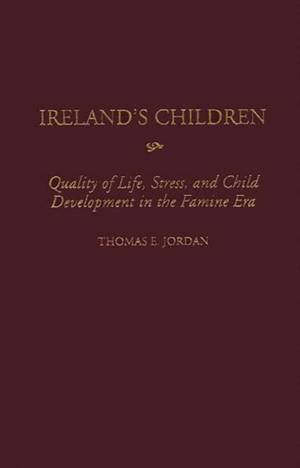
- Afhalen na 1 uur in een winkel met voorraad
- Gratis thuislevering in België vanaf € 30
- Ruim aanbod met 7 miljoen producten
- Afhalen na 1 uur in een winkel met voorraad
- Gratis thuislevering in België vanaf € 30
- Ruim aanbod met 7 miljoen producten
Zoeken
€ 161,45
+ 322 punten
Omschrijving
A quantitative analysis of the situation of Ireland's children during the famine era (1841-1861), this study utilizes census data to construct a series of indices to measure the quality of life for children in each of Ireland's 32 counties. While relatively little is known about the particular effects of the famine on childhood, census records from 1841, 1851, and 1861 do exist. Jordan also considers anthropometric data on military recruits, emigration figures, school enrollment, church records, and contemporary accounts to build a picture of Ireland's children.
This comparative approach provides a wealth of information on family life in Ireland at both the county and the provincial levels. It addresses the role of home and school as a model of socialization and the use of emigration as a coping device. The author also explores the social climate created by the 1838 Poor Law. Ultimately, the stress of struggling to survive the natural disaster of the famine, combined with the political developments of the day, had a devastating effect on the young.Specificaties
Betrokkenen
- Auteur(s):
- Uitgeverij:
Inhoud
- Aantal bladzijden:
- 216
- Taal:
- Engels
- Reeks:
- Reeksnummer:
- nr. 61
Eigenschappen
- Productcode (EAN):
- 9780313307522
- Verschijningsdatum:
- 24/11/1998
- Uitvoering:
- Hardcover
- Formaat:
- Genaaid
- Afmetingen:
- 162 mm x 242 mm
- Gewicht:
- 517 g

Alleen bij Standaard Boekhandel
+ 322 punten op je klantenkaart van Standaard Boekhandel
Beoordelingen
We publiceren alleen reviews die voldoen aan de voorwaarden voor reviews. Bekijk onze voorwaarden voor reviews.











